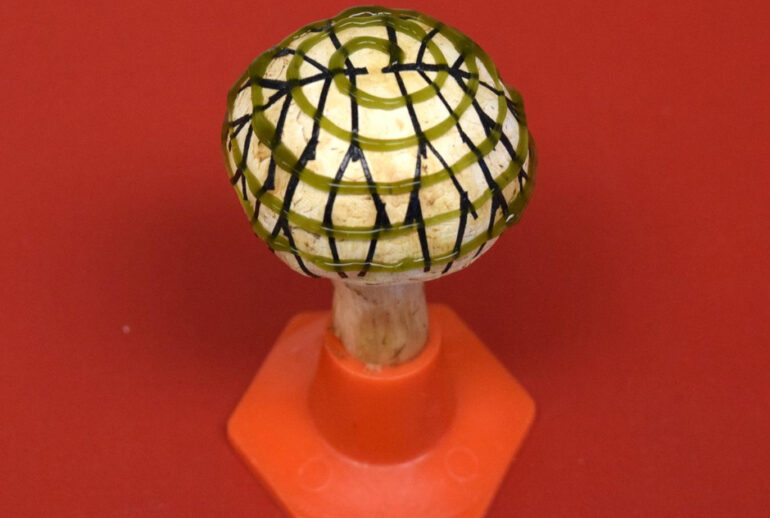Cyanbacteria is the bane of many reefers and at some point most of us have run into the dreaded “red slime“. But cyanobacteria also has the potential to be used in the future to provide an alternative source of electricity and researchers are combining cyanobacteria with a mushroom (not the coral) in an intriguing example of bio-hybrid materials.
New Jersey’s Stevens Institute of Technology created a bionic mushroom by using this by using 3D-printed clusters of cyanobacteria to cover the cap of a white button mushroom to generate the electricity and a web of graphene nanoribbons to actually collect the current. Although we’re a long way away from harvesting electrons from cyano to drive our skimmers, its an interesting proof of concept on what could be possible in the future.
“By integrating cyanobacteria that can produce electricity, with nanoscale materials capable of collecting the current, we were able to better access the unique properties of both, augment them, and create an entirely new functional bionic system,” said Manu Mannoor, an assistant professor of mechanical engineering at Stevens.
While I never seemed to have an issue growing cynaobacteria in my tanks, it doesn’t last quite long enough on its own to be used as a fuel source. The team tapped the mushroom to provide the nutrients, moisture, pH and temperature for the cyanobacteria to produce electricity and it worked, the cyanobacterial cells lasted when compared to silicon and dead mushrooms used as controls in the study.
If you’re interested in geeking out and learning more about this study, the work has been reported in Nano Letters as part of a broader effort to “…understand and utilize the biological machinery of cells in order to fabricate new technologies.”



